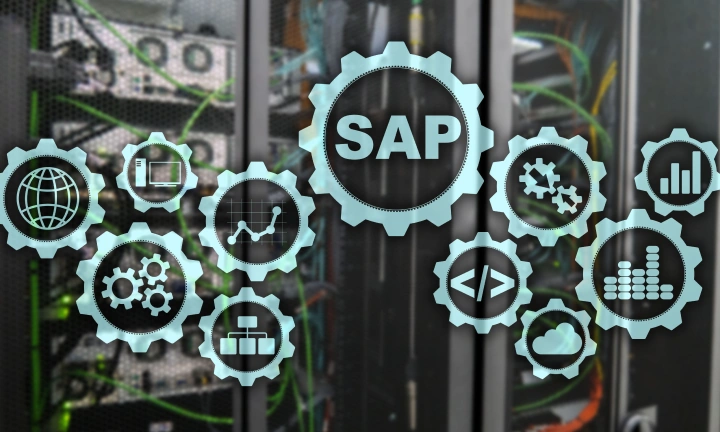With SAP announcing the end of support for the current minus one versions by the middle of this decade, the S/4HANA Migration has become the latest business buzz around the industry. With a number of businesses relying on this ERP platform for their everyday operations, deciding migration strategies has become challenging.
While onboarding with SAP S/4 HANA cloud makes several aspects of the transition, structured and simplified, organizations today can be majorly classified into three categories:
- One that has already migrated to the SAP S/4HANA platform.
- One that plans to wait for the deadline to adapt to the platform with a precise solution.
- One that wants to retain parts of their legacy system, post the migration process.
As nobody has a clear plan of action or strategy to adapt or migrate for making the journey easier. Here are some deployment options that will help you choose the right one for your business.
But, before we look into the possibilities of migration, let’s understand the SAP S/4 HANA platform in detail.
What is SAP S/4 HANA?
SAP launched S/4 HANA in February 2015, and due to its immense popularity, S/4 HANA has become their flagship product. This business suite application is believed to be the next-generation heir of SAP ECC. This means it is the fourth generation of SAP Business Suite but is formulated only on the SAP HANA Platform. This business suite employs the SAP Fiori user interface which is more user-friendly and appealing as compared to the conventional SAP GUI.
How is the On-Premise version different from S/4 HANA Cloud?
To grasp this, understanding the fundamental difference between S/4 HANA On-Premise and S/4HANA Cloud is essential.
The cloud edition has less customizable capabilities. It might not affect the process of data migration, but it is indeed a considerable difference to point out. Similarly, the integrations are complex in the cloud and might raise security concerns as it runs on the ready-made platform. But the advantage is, the cloud provider does the implementation and testing; all you need to do is migrate your data and start.
Here are some key differences to note:
- S/4 HANA On-Premise deployment provides you an option whether you want to opt or not for upgrades. With cloud adoption, you are automatically tuned to the regular upgrade cycle.
- S/4 HANA Cloud is a more compact version of the on-premise system and the deployment is easy. The cloud version is template-based that focuses on specific key components.
SAP S/4 HANA Migration Strategies:
Option 1: Newly Implementation or Greenfield
The new or Greenfield implementation of SAP HANA S/4 enables detailed process and re-engineering. This approach allows businesses to predefine migration items. It helps in lowering TCO and Time to Value to facilitate faster adoption.
The new implementation also brings benefits like Fiori UI, advanced ATP, in-memory database, and more. S/4 HANA integrates best industry practices that help the company to optimize and improve its business processes. As the new implementation is done from scratch, there are many opportunities to revamp and correct the past issues of the system.
However, it is an expensive approach with lengthy timelines.
Option 2: Reuse or Brownfield
A Brownfield deployment offers a no-risk alternative that cost-effectively integrates the SAP landscape with a holistic approach and creates harmonization in all business processes.
A system transformation is suitable for new implementation as the process can be segregated into several phases. It helps businesses to hold a clear view of the project and assists in optimizing project management. If you are looking for a kick-start, follow these five steps:
- Start with Custom code optimization
- Then upgrade to the latest Enhancement Package (EHP)
- Check SAP S/4HANA changes that will affect things like data model and functional changes
- Implement the new version on the SAP HANA Platform
- Tune performance for optimal functioning of the new SAP S/4 HANA Platform
A word of caution, the pros of this deployment strategy can turn into cons later. As old processes are adopted during migration on a new system, the business disruption is likely to be minimal. However, later this will leave you with limited options for process re-engineering. This approach offers less timeline than greenfield, but there will be far more technical impediments compared to other strategies.
Option 3: Hybrid or Bluefield
Do you want to move a small portion of data and processes? Hybrid migration is the perfect match, in this case, keep reading to know how?
If you want to make sure you don’t bring old, complicated, and unnecessary processes into the new system; it is advisable to go for a Hybrid or Bluefield approach. When it comes to business processes, you will also need to transfer the necessary custom functionalities and required data from the older system. This part of the process is similar to the brownfield implementation strategy.
Option 4: Landscape Transformation
If you are using multiple ERP systems, the Landscape Transformation approach is your best bet. This approach also goes by those companies who also need to integrate non SAP applications to S/4 HANA like procurement apps, analytical platforms, HR Software, and other business-essential apps.
In this case, the migration process starts by sending out the data from varied sources through SAP Landscape tools. In the Landscape Transformation approach, data stored from the original application becomes part of the S/4 HANA core system.
This approach brings varied benefits; it is advised to start the migration process with the SAP Landscape Transformation tool. This will enable you to find issues that can arise during the data migration and system update process. So, knowing things beforehand can help resolve those issues in no time.
Conclusion
Now that you know the various options and strategies you can deploy for doing the SAP S/4 HANA migration, the choice depends on a variety of factors like the current version, the number of business entities, the financial consolidation approach, number of SAP users, the existing infrastructure being on-cloud or on-premise or both, and much more. So choose your approach wisely while going in for a new version on the SAP S/4 HANA Cloud Platform.





